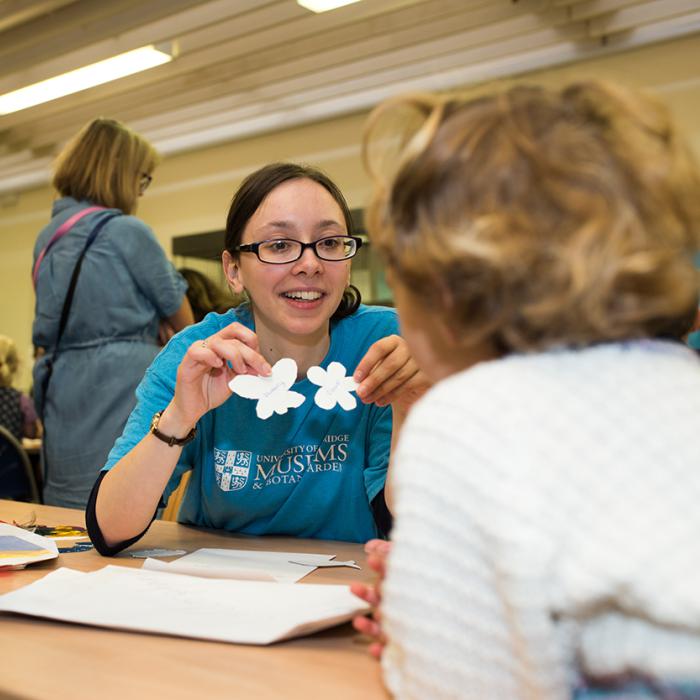Two artefacts from Mount Carmel, Israel, speak of a twelve-thousand-year-old mystery - and two trailblazing archaeologists.
A pair of shell and bone necklaces in the collection at the Museum of Archaeology and Anthropology date to around twelve thousand years ago - before people began to settle down to farm. How can we use these objects to highlight the stories of their excavators, pioneering archaeologist Dorothy Garrod and her colleague and gay rights campaigner, Francis Turville-Petre? And were they really necklaces at all?
Imogen Gunn, Collections Manager for Archaeology at the Museum of Archaeology and Anthropology, tells us more.
More information
The necklaces
Necklace excavated by Dorothy Garrod
![]()
Detail of the beads and pendants
![]()
Necklace excavated by Francis Turville Petrie
![]()
From the museum's records:
Object numbers: 1952.296 (on display) and 1931.1147 (not on display)
Both necklaces date to the Early Natufian (11,000 - 12,800 BP). The type of shell is dentalium, which is a mollusc, and is perfect as a bead because it is already hollow and naturally tube-like. In 1925, Francis Turville-Petre discovered ‘Galilee Man’, a member of the archaic human species Homo heidelburgensis. Further articles on Garrod and Turville-Petre available.
Display of Dorothy Garrod's artefacts in the museum

Dorothy Garrod
These notes are taken from the Bridging Binaries LGBTQ+ tour material, researched by Dan Vo.
- MAA has an extremely strong collection of Anglo Saxon material from Britain, and its collections of world prehistory, particularly from the Palaeolithic era (2,000,000 to 100,000 years ago), are uniquely comprehensive. Dorothy Garrod was one of the most influential experts on the Paleolithic era.
- She was a pioneer in the field of archaeology, especially in the understanding of the Paleolithic era and early human origins. Her work also broke through the barriers for women in the field of archaeology.
- Director of Studies in Archaeology and Anthropology at Newnham College Cambridge, she was the first woman professor at the University of Cambridge and at the time it was seen as an extraordinary step forward in equality.
- Her crews on excavations almost always included either all women or a majority of women. During her Mount Carmel expedition, most of her team consisted of local Arab women. She was interested in supporting their learning as well as their families.
- In fact it was a Palestinian woman named Yusra (we do not know her full name, but do know she had aspired to study in Cambridge) who played a key role in the discovery of one of the most important human fossils ever found (the Tabun 1 skull, now in the Smithsonian Museum of Natural History).
- Garrod never married.
Francis Turville-Petre
- Francis Turville-Petre joined Garrod on the Mount Carmel expedition.
- He is probably best remembered for finding the Galilee skull, partial cranium of a Neanderthal, in the Mugharet ez-Zuttiyeh (Robber’s Cave) near the Sea of Galilee.
- Turville-Petre was openly gay and campaigned for more tolerant attitudes towards homosexuality and reform of the laws banning sex between men.
- He attended the 1928 Congress of the World League for Sexual Reform in Copenhagen, and between 1928 and 1931 stayed at the renowned Institute of Sexual Research in Berlin, run by the doctor and sexologist Magnus Hirschfield.
- Turville-Petre was also an active member of Hirschfield’s Scientific Humanitarian Committee, whose motto (Per Scientiam ad Justitiam or ‘Justice Through Science’) expressed their desire to use research and science to end discrimination against LGBTQ+ people.
- While in Berlin, Turville-Petre socialised with other gay intellectuals, including Christopher Isherwood and WH Auden.
- One of Auden’s lost plays, The Fronny (1930), was inspired by Turville-Petre, who was known as ‘Fronny’ because his German lovers were unable to pronounce the name ‘Francis’.


